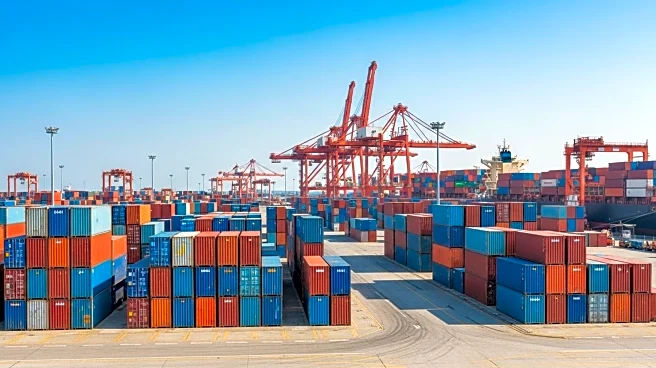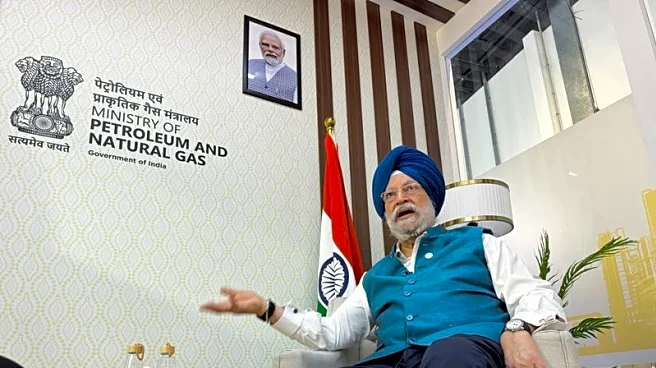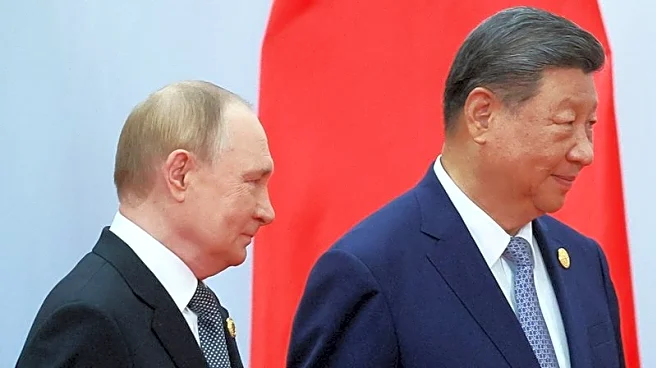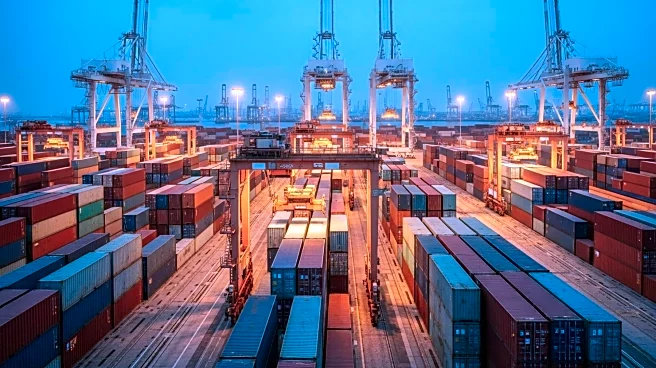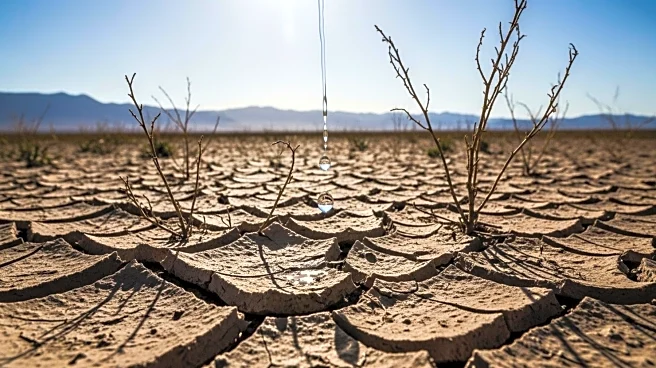What's Happening?
India has completed the Phase 2 expansion of the JN Port-PSA Mumbai Terminal, doubling its capacity and establishing it as the largest container terminal in the country. The expansion increases the terminal's annual handling capacity to 4.8 million TEUs and enhances its ability to accommodate mega container vessels. The project, which spans 200 hectares, integrates enhanced yard capacity and multimodal infrastructure, utilizing electric equipment to promote sustainability. The inauguration ceremony was attended virtually by the Prime Ministers of India and Singapore, marking the largest foreign direct investment from Singapore in India to date.
Why It's Important?
The expansion of the JN Port-PSA Mumbai Terminal is a significant development in India's maritime infrastructure, positioning the country as a potential global maritime superpower. This project aligns with Prime Minister Narendra Modi's strategic vision of Port-led Development, aimed at driving India's economic growth. The increased capacity and connectivity of the terminal are expected to advance India's trade ambitions, potentially handling over 10 million containers annually. This development also highlights the growing cooperation between India and Singapore, particularly in areas such as sustainability, digitalization, and advanced manufacturing.
What's Next?
The completion of the terminal expansion is expected to enhance India's position in global trade, with Mumbai potentially securing a place among the world's 10 largest ports. The collaboration between India and Singapore may lead to further investments and partnerships in sectors like semiconductors, biotechnology, and space. The focus on sustainability and digitalization could drive future projects, fostering economic growth and innovation in both countries.
Beyond the Headlines
The expansion of the JN Port-PSA Mumbai Terminal reflects broader trends in global trade and infrastructure development. The emphasis on sustainability and electric equipment usage indicates a shift towards environmentally friendly practices in the maritime industry. This project may serve as a model for other countries seeking to enhance their trade capacity while minimizing environmental impact.
